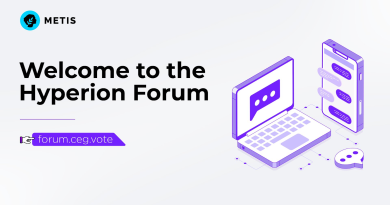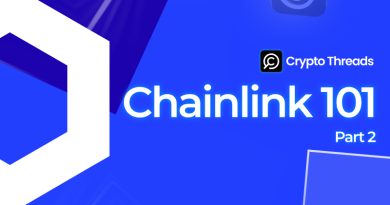Decentralization in the Metaverse: Who’s in Control?
Introduction
Have you ever wondered when playing online games or using social media, who decides the rules? Who has the power to delete your account? Who controls the prices in games?
In the world of crypto and metaverse (virtual worlds), this question becomes more important than ever. Because this isn’t just a place for entertainment, but also where people can earn real money and own virtual assets with real value.
What is Decentralization?
Simple Definition
Decentralization means that no single person or organization holds all the power. Instead, power is shared among many people.
Imagine it like this: Instead of having one boss who decides everything in a company, all employees vote together to make important decisions.
Comparison with the Real World
Centralized System:
- Facebook decides what you can post and what you can’t
- Banks decide who you can transfer money to and when
- Apple decides which apps can be sold on the App Store
Decentralized System:
- Users collectively decide the rules
- No one can change the system alone
- Power belongs to the community
What is the Metaverse?
Easy Definition
The Metaverse is a 3D virtual space where people can:
- Meet and chat with others through avatars (virtual representations)
- Buy and sell virtual assets like land, houses, clothes for avatars
- Attend events, learn, and work
- Earn real money from activities in the virtual world
Illustrative Examples
Example 1: Mr. Nam buys a piece of virtual land in Decentraland for $5,000. He builds a virtual store selling NFT art. After 6 months, this land increases in value to $8,000.
Example 2: Ms. Linh creates unique virtual clothing for avatars, selling them for $50 each. In the first month, she sells 200 pieces, earning $10,000.
Example 3: A company organizes a virtual concert, selling tickets for $20 each. 10,000 people attend, generating total revenue of $200,000.
Who is Controlling the Metaverse?
Tech Giants
Currently, large companies like:
- Meta (Facebook): Investing billions in Horizon Worlds
- Microsoft: Developing metaverse for businesses
- Apple: Preparing to launch AR/VR glasses
- Amazon: Building virtual commerce platforms
Decentralized Model
However, there are also decentralized metaverses like:
- Decentraland: Users own and govern through MANA tokens
- The Sandbox: Community decides development direction through SAND tokens
The Role of Cryptocurrency
Why is Crypto Important?
Cryptocurrency serves as the “currency” in decentralized metaverses:
- Payment: Buying and selling virtual assets
- Governance: Voting on policy decisions
- Ownership: Proving ownership of assets
Real Examples
Decentraland Case:
- Want to buy virtual land → Need MANA tokens
- Want to participate in decisions → Need to own MANA
- Land prices increase → MANA price usually increases too
Comparison with real world:
- In Vietnam: Want to buy land → Need VND, but can’t vote on land policies
- In Decentraland: Have MANA → Can buy land AND have voting rights on land policies
Benefits of Decentralized Model
Advantages
✅ Transparency: All decisions are public and verifiable
✅ Fairness: No one can arbitrarily change the rules
✅ Earning opportunities: Content creators benefit directly
✅ True ownership: Virtual assets belong to you, not the platform
Specific Example
Mr. Minh creates a mini-game in The Sandbox. Instead of The Sandbox taking 70% of revenue (like Apple App Store), Mr. Minh keeps 95%, only paying 5% transaction fees.
Risks and Challenges
⚠️ Important Considerations
- High price volatility
- MANA token can rise from $1 to $5 in 1 month
- But can also drop from $5 to $1 in 1 week
- Complex technology
- Need to understand digital wallets
- Must know how to secure private keys
- Risk of losing money if not careful
- Immature market
- Metaverse is still developing
- Not many users yet
- Virtual asset values could go to zero
- Competition from “big players”
- Meta could create free metaverse, attracting users
- Decentralized metaverses might be “left behind”
📋 Important Notes Warning: Only invest money you can afford to lose completely. Metaverse and crypto are high-risk markets.
Current Real-World Applications
Popular Activities
- Virtual land trading
- Prices range from $1,000 – $100,000
- Can rent out for passive income
- Creating and selling NFTs
- Digital art, music, videos
- Prices from a few dollars to millions
- Event hosting
- Concerts, exhibitions, conferences
- Earn from ticket sales or sponsorships
- Play-to-earn gaming
- Games that pay you to play
- Earn crypto through gameplay
Future of Decentralized Metaverse
Notable Trends
Positive:
- Many major brands participating (Gucci, Nike, Coca-Cola)
- VR/AR technology improving
- Equipment costs decreasing
Challenges:
- Fierce competition with centralized metaverses
- Need to improve user experience
- Legal issues remain unclear
Conclusion
Decentralized metaverse offers exciting opportunities to participate in building virtual worlds where everyone has a voice and can benefit from community growth.
However, this is still a new field, full of risks and uncertainty about the future. Before participating, you should:
- Learn thoroughly about blockchain technology and crypto
- Start with small amounts to gain experience
- Follow news and market trends
- Join communities to learn from others
Remember, the decision to participate or not is entirely yours. Don’t rush, consider carefully before making investment decisions.
💡 Tip: Start by creating free accounts on Decentraland or The Sandbox to experience before investing real money.



